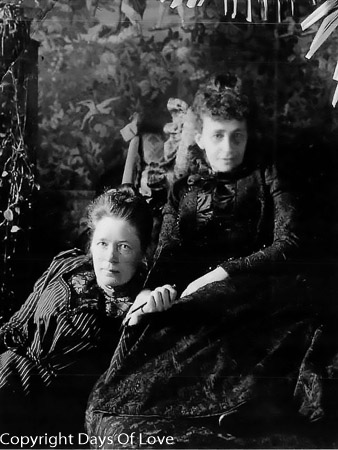

Partner Sophie Elkan
Queer Places:
Uppsala University, Uppsala, 752 36 Uppsala, Svezia
Mårbacka, 686 96 Östra Ämtervik, Svezia
Östra Ämterviks kyrkogård, so, 686 96 Sunne, Svezia
 Selma
Ottilia Lovisa Lagerlöf (20 November 1858 – 16 March 1940) was the first woman
Nobel Prize, Literature (Sweden) in 1909.
Selma
Ottilia Lovisa Lagerlöf (20 November 1858 – 16 March 1940) was the first woman
Nobel Prize, Literature (Sweden) in 1909.
She was a Swedish author and teacher. She was the first female writer to win the Nobel Prize in Literature.
Born at Mårbacka[1] (now in Sunne Municipality) an estate in Värmland in western Sweden, Lagerlöf was the daughter of Lieutenant Erik Gustaf Lagerlöf and Louise Lagerlöf née Wallroth, the couple's fifth child out of six. She was born with a hip injury. An early sickness left her lame in both legs, although she later recovered. She was a quiet child, more serious than others her age, with a deep love for reading. She was constantly writing poetry as a child, but did not publish anything officially until later in life. Her grandmother helped raise her, often telling stories of fairytales and fantasy. The sale of Mårbacka following her father's illness in 1884 had a serious impact on her development. Selma's father is said to have been an alcoholic, something she rarely discussed.[2] Her father did not want Selma to continue an education, or remain involved with the woman's movement. She ended up buying back her father's estate with the money she received for her Nobel Prize achievement.[3]

In 1894 she met the Swedish writer Sophie Elkan, who became her friend and companion; their letters suggest Lagerlöf fell deeply in love with her.[6] Over many years, Elkan and Lagerlöf critiqued each other's work. Lagerlöf wrote that Elkan strongly influenced her work and that she often disagreed sharply with the direction Lagerlöf wanted to take in her books. Selma's letters to Sophie were published in 1993, titled Du lär mig att bli fri (You Teach me to be Free).[5]
She moved in 1897 to Falun, and met Valborg Olander, who became her literary assistant and friend, but Elkan's jealousy of Olander was a complication in the relationship. Olander, a teacher, was also active in the growing women's suffrage movement in Sweden. Selma Lagerlöf herself was active as a speaker for the National Association for Women's Suffrage, which was beneficial for the organisation because of the great respect which surrounded Lagerlöf, and she spoke at the International Suffrage Congress in Stockholm in June 1911, where she gave the opening address, as well as at the victory party of the Swedish suffrage movement after women suffrage had been granted in May 1919.[11]
Selma Lagerlöf was a friend of the German-Jewish writer Nelly Sachs. Shortly before her death in 1940, Lagerlöf intervened with the Swedish royal family to secure the release of Sachs and Sachs' aged mother from Nazi Germany, on the very last flight from Germany to Sweden, and their lifelong asylum in Stockholm.
My published books:
https://en.wikipedia.org/wiki/Selma_Lagerl%C3%B6f